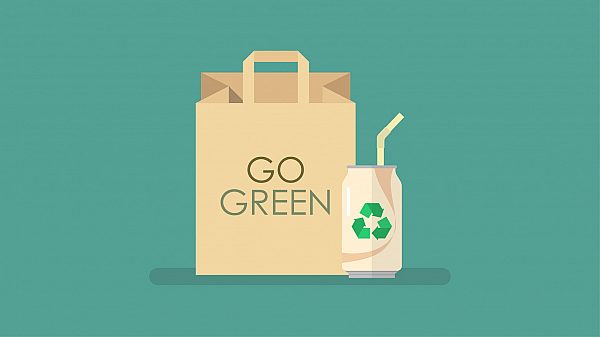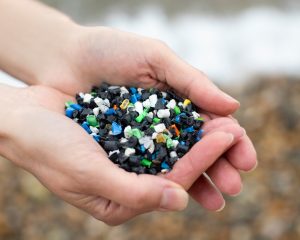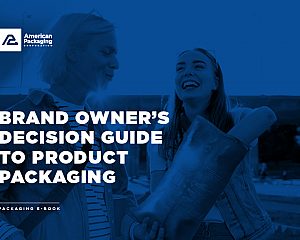Company News
The latest updates from our organization
The State of Packaging Sustainability: Has COVID-19 Derailed Progress?
Corporate sustainability is a journey. One that is unique to every brand. Company goals and values, packaging technologies, infrastructure, existing policies, legislation and level of difficulty should all be considered as you devise your company’s sustainability roadmap.
Prior to COVID-19, sustainable packaging was a top priority for many brands that aimed to eliminate single-use plastics and redesign packaging to be recycled, reused or composted following the guidelines of the New Plastics Circular Economy. This was evidenced by numerous examples, including plastic bag bans, fees for shopping bags, coffee shops moving toward the use of reusable cups, and significant activity related to development of sustainable packaging alternatives.
Once the pandemic hit, brand and consumer priorities shifted and sustainability efforts stalled. Here’s how we see the future of sustainable packaging playing out over the next few years.
The COVID-19 Impact
While sustainability is still an important initiative for many brands, with the pandemic at large, priority has shifted for a few key reasons. For starters, many employees had to shift to work from home, which limited access to the production floors and testing of sustainable options. Second, the pandemic has caused many brands, especially those producing food and snack items, to alter packaging strategies to support health and safety protocols. Hence, hygiene entered the scene as the top priority and new expectation for packaging amid the pandemic.
For example, you may see more individual or single-serve packages available in the store today. Think items like potato chips, crackers, cookies and other snack foods. Many brands have upped the number of individual or single-serve packages being produced to help reduce the risk of spreading germs.
A third challenge is materials. As it is, brands must account for package designs, materials and cost structures. Once packaging hits the production line, the equipment has been designed to convert them at the most efficient rates, and they’re good to go. When introducing sustainable materials into the mix, testing and trials of technical and production elements are often needed. Many recyclable materials behave differently when they’re run through production equipment. And with COVID-19, testing timeframes have been delayed.
While the pandemic may have slowed packaging sustainability initiatives, it has also inadvertently given brands time to step back and take a good look at the environment, customer needs and sustainability goals. Materials, process technologies, end-of-life technologies and infrastructure are just a few of the rapidly evolving considerations that must be thoroughly examined to bring a successful sustainability journey to life.
Moving Forward
At APC, we see a bright future for sustainable packaging. While COVID-19 has stalled some momentum, many brands are revamping their sustainability goals and resetting timelines for launching (or relaunching) as early as the beginning of the new year.
It’s important to find the sustainable packaging options that are most effectively going to help your brand meet its goals. Taking a deeper dive into the types of sustainable materials available is a great first step. For example, here at APC, we follow a comprehensive Sustainability Playbook full of 50+ material options that enable our customers to pinpoint exactly how to achieve their environmental goals. As mentioned previously, every sustainability journey is different, and customers need the flexibility to choose what is going to work from them—and work closely with their suppliers and converters to make it happen.
We envision brands starting to explore more recyclable materials soon. One of those materials is polyethylene. The great thing about this material is that it’s very flexible. But on the flip side, there are elements that need to be considered when it’s converted. Here at APC, we’ve recently installed two new rotogravure presses that can effectively convert polyethylene, with automation and production controls to effectively handle the material to produce the high-quality imagery you expect from gravure.
Traditionally, recycling of flexible packaging has been primarily limited to the front-of-store drop-off program, where the consumer must return certain branded packaging to the store for recycling. While this is a great program, not all people take that last step to drop off the product. We envision that more options and programs will come together over the next couple of years as brands work more closely with their designers, converters and suppliers on sustainability goals.
As more brands move into sustainable material options, one element that always rises to the top of the list is cost. The analysis of more quantifiable metrics is important in any conversation about costs. We can easily identify yield of material, run speeds and cost, but a more holistic look through a lifecycle analysis can be beneficial for decisions related to sustainability moving forward.
These are only a handful of factors impacting sustainable flexible packaging. If you have any questions or are interested in learning more about flexible packaging and sustainability options, please visit americanpackaging.com/sustainability/environmental-sustainability.
By: Jeff Travis, Innovation & Sustainability Manager, American Packaging Corporation (APC)







